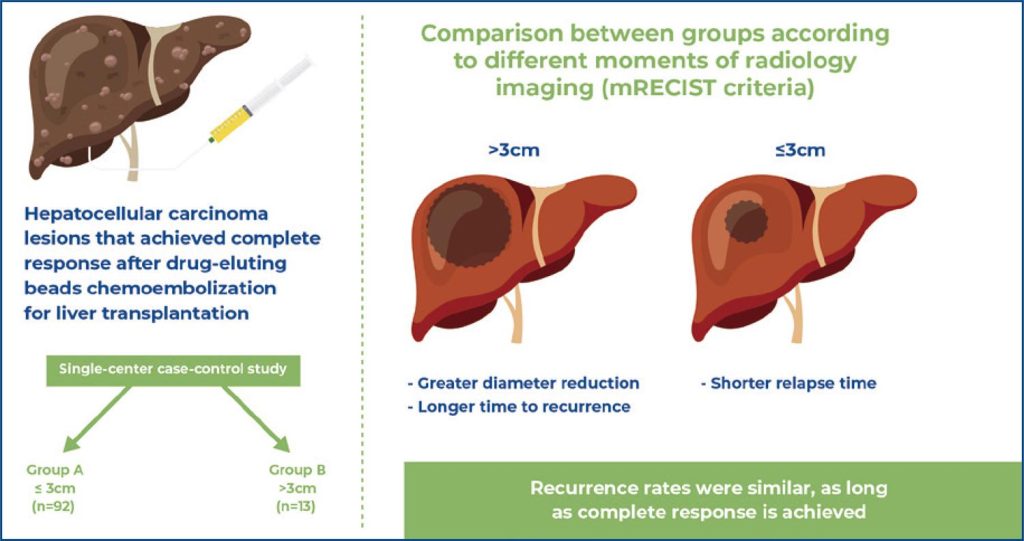einstein (São Paulo). 19/Oct/2023;21:eAO0307.
Radiological characteristics of hepatocellular carcinoma that achieved complete response after chemoembolization with drug-eluting beads for liver transplantation planning
DOI: 10.31744/einstein_journal/2023AO0307
Highlights
Once complete hepatocellular carcinoma necrosis is achieved, the diameter of the hepatocellular carcinoma decreases significantly, regardless of its initial size.
Hepatocellular carcinoma >3cm showed greater reduction and longer time to recurrence.
Hepatocellular carcinoma ≤3cm exhibited a shorter time to relapse.
Recurrence rates were similar, as long as complete response was achieved.
ABSTRACT
Objective:
To describe the radiological characteristics of hepatocellular carcinoma (HCC) lesions that achieved a complete response following drug-eluting bead transarterial chemoembolization (DEB-TACE) preceding liver transplantation.
Methods:
This single-center case-control study enrolled patients with hepatocellular carcinoma who underwent neoadjuvant DEB-TACE therapy, were followed up with contrast-enhanced magnetic resonance imaging or computed tomography, and were successively evaluated according to the modified Response Evaluation Criteria in Solid Tumors. The HCCs were divided into two groups based on their diameter (Group A: ≤3cm; Group B: 3cm). Viability was assessed using the Kaplan-Meier method according to tumor size categories. The relationship between tumor variables was analyzed using bivariate Cox regression.
Results:
Three-hundred and twenty-eight patients with 667 hepatocellular carcinomas who underwent their first DEB-TACE session were enrolled. A total of 105 hepatocellular carcinomas in 59 patients exhibited complete response after the initial DEB-TACE session and were divided into Group A (92 HCCs) and Group B (13 HCCs). The diameter in Group A decreased significantly compared to the pre-procedure size until the second assessment (p<0.001), with no subsequent reduction in diameter, despite maintaining a complete response. In Group B, the reduction in diameter remained significant compared with the initial value until the sixth imaging evaluation (p=0.014). The average reduction was 45.1% for Group B and a maximum of 14.9% in Group A.
Conclusion:
HCCs >3cm exhibited a greater reduction in size and a longer time to recurrence. HCCs ≤3cm had a shorter relapse time. The recurrence rates were similar. These findings may aid in planning for liver transplantation.
[…]
73


